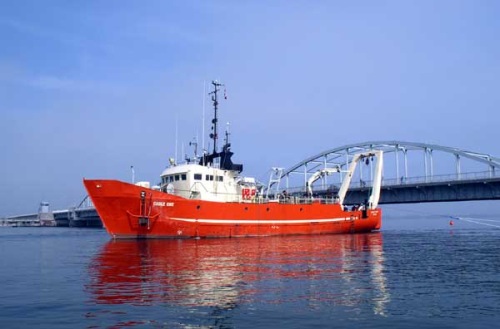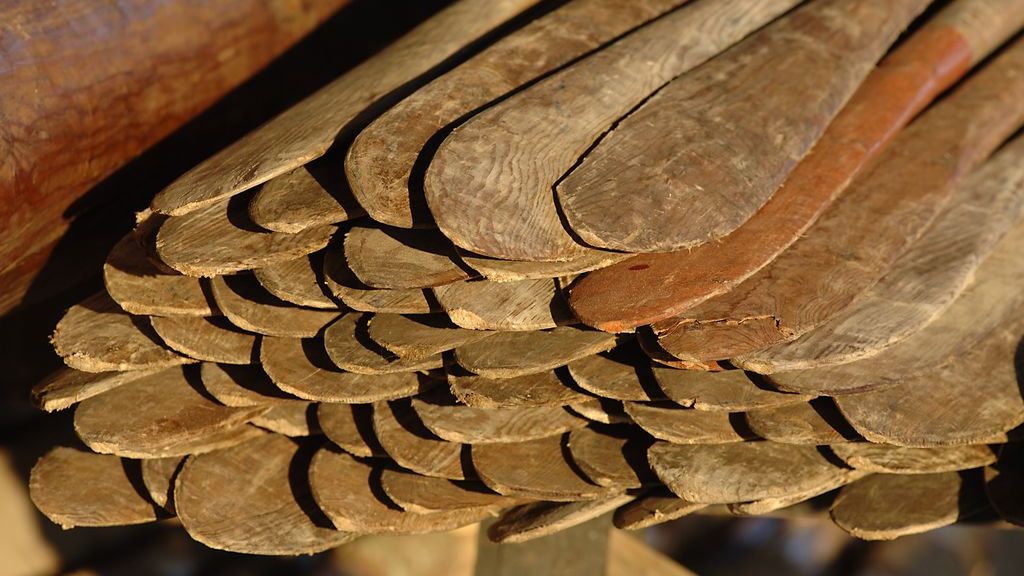Frankly we do not know a whole lot about, what the fleet commanders of the Viking Age thought about safety and which precautions they took, before the navy vessels headed out to sea.
It is a given however that the losses of human lives in those days would make the hair stand up on the back of our necks. If we believe in the dramatic accounts of the sagas, gales and rainstorms at sea would at times decimate a fleet with a third or more.
Be that as it may, the Vikings – hardened sailors – must have done whatever they could to bring as many ships as possible safely to the destination… and they did so successfully. And if the Vikings had had access to modern safety and communications equipment, they would have used it.
The most dangerous waters in Europe
At the Viking Ship Museum it is no secret that going in an open vessel all the way from Roskilde to Dublin is risky – not in the least when the voyage goes straight through the most dangerous waters in Europe – the sea north and west of Scotland.
As a consequence safety will always have priority over the archaeological experiment.
“You can view safety as the sum of a series of factors: the condition of the ship, the fitness and training of the crew, the equipment, and the support ship – to mention the most important. And then precautions like the mandatory life vest, the ban against alcohol onboard, and that every crew member has a safety suit,” says Skipper Carsten Hvid.
Supervising the ship
“The condition of the ship will be monitored by the two boat builders in the crew. They will assess and mend damages and advice the skipper on probable consequences on the continued voyage. The rig will be supervised by the skipper himself; he is also a rope maker at the museum. Additionally we bring along a spare rudder and supplies and tools to refit the ship and rig”.
The crew’s training includes participation in altogether fourteen practice trips since 2004, participation in a sea-safety seminar under the guidance of a former navy instructor, a first-aid class with the project’s nurse, and in the evacuation drill of the next training weekend, held in corporation with the Admiral Danish Fleet. Furthermore twenty crewmembers completed a seminar on hard-weather sailing at Fosen Folk High School in Norway. And the crew has integrated a buddy system, organizing the crew in pairs obligated to keep an extra keen eye on each other.
State of the art equipment
“On the technological flank the ship has been equipped with modern navigational-, weather forecast-, communications-, and rescue instruments. The instruments automatically send information to other vessels about the identity, position, route, speed, and the amount of crew of the Sea Stallion. We also have a so called NavTex weather report system, which makes it possible to monitor the build up of local weather en route. Apart from this the safety equipment of the Sea Stallion counts life rafts – holding up to eighty people, rescue suits, and life vests for the entire crew,” Carsten Hvid affirms.
And then there are support ships joining the Sea Stallion from Hundested to Dublin – a Danish vessel with a crew experienced in North Sea conditions on the first half of the voyage and a Scottish vessel with local knowledge of the seas north and west of Scotland and in the Irish Sea on the second half of the endeavour.
“The support ships will if necessary aid us by towing, rescue sailors, taken on board sick or injured crewmembers until the help gets there, assist at rescue attempts, and take care of communication with the Rescue Coordination Centre in case of havoc or wreck,” Carsten Hvid concludes.



